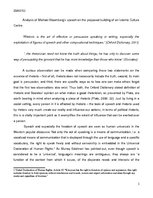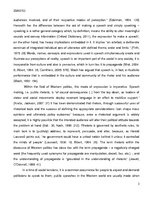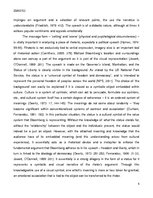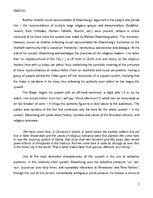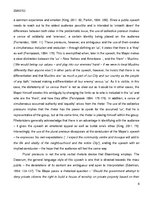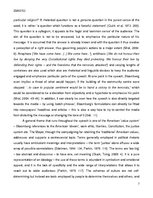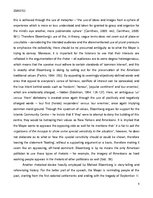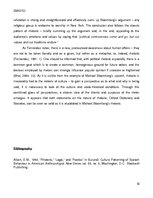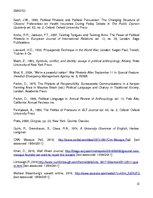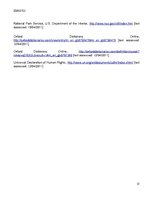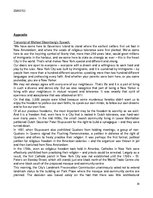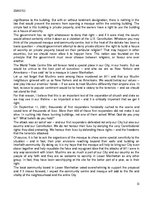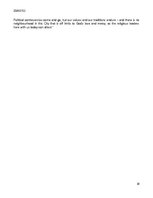To sum up, Michael Bloomberg’s speech follows the classic forms of rhetoric – it starts off with a strong introduction, following up with a narration, proposition – stating the facts of the issue at hand, division, proof of the validity of his arguments and a refutation of arguments advanced against his point of view, which he does by saying: “It is my hope that the mosque will help to bring our City even closer together and help repudiate the false and repugnant idea that the attacks of 9/11 were in any way consistent with Islam.” The concluding statement of the refutation is strong and straightforward and effectively sums up Bloomberg’s argument – any religious group is welcome to worship in New York. The conclusion also follows the classic pattern of rhetoric – briefly summing up the argument and, in the end, appealing to the audience’s emotions and values by saying that “political controversies come and go, but our values and our traditions endure.”
As Fernandez notes, there is a new, pronounced awareness about human affairs – they are not to be taken literally and as a given, but rather as a metaphor, or, indeed, rhetoric (Fernandez, 1991: 1). One should be informed that, with political rhetoric especially, there is a common goal which is to create a common, homogenous ground for future action, and the devices employed by rhetors can strongly influence popular opinion if unaware or frightened (Mral, 2004: 33). As it is visible from the example of Michael Bloomberg’s speech, rhetoric is irrevocably tied to the notions of culture – to gain a perspective as to what and why is being said, it is necessary to look at the culture and socio-historical conditions. Through this combined glass of perspectives, a clearer view of the intents and purposes of the rhetor emerges. It appears that both statements on the nature of rhetoric, Oxford Dictionary and Socrates, can be seen as valid as it is elucidated in Michael Bloomberg’s rhetoric.
…
Speech and especially the freedom of speech are seen as human universals in the Western popular discourse. Not only the act of speaking is a means of communication, i.e. a vocalised means of communication that is deployed through the use of language and a specific vocabulary, the right to speak freely and without censorship is embedded in the Universal Declaration of Human Rights. As Murray Edelman has pointed out, even though speech is considered to be a ‘universal’, language’s meanings are ambiguous, they always are “a function of the context from which it issues, of the disparate needs and interests of the audiences involved, and of their respective modes of perception.” (Edelman, 1964: 130) Herewith lies the difference between the act of making a speech and simply speaking – speaking is a rather general category which, by definition, means the ability to utter meaningful sounds and convey information (Oxford Dictionary, 2011); the expression ‘to make a speech’, on the other hand, has heavy implications embedded in it. It implies “an artefact, a deliberate construct of integrated individual acts of utterance with defined theme, order and limits.” (Firth, 1975: 29) Words, names, concepts and expressions used in speech simultaneously create and illustrate our perceptions of reality; speech is an important part of the social in any society, it is inseparable from culture and also is pervasive, which in turn ties it to propaganda (Mral, 2004: 9; Albert, 1964: 35; Carrithers, 2005: 579). Mach has argued that speech is, in fact, a ritualistic performance that is embedded in the culture and community of the rhetor and his audience.

